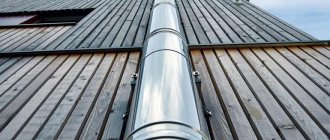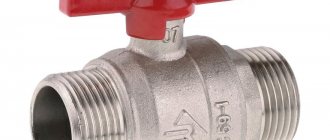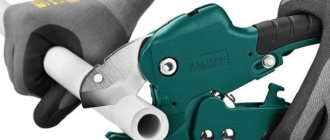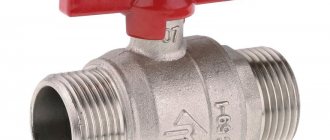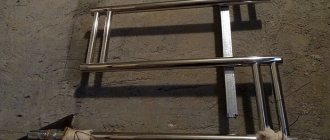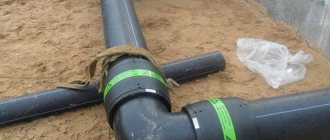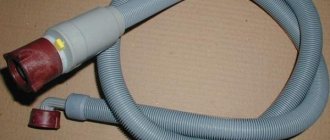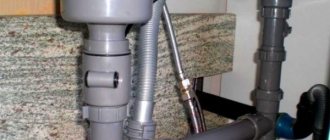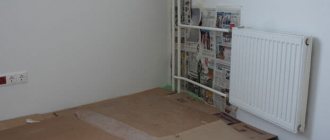A drainage system is necessary for every building - be it an apartment building, a country cottage or just a modest dacha. The drain collects and removes precipitation away from the building, protecting the walls and foundation from moisture and premature destruction. The importance of using drainage is beyond doubt. However, almost every homeowner wonders which drainage system is better to install: metal or plastic? In our article we will compare these two materials so that you can make your choice as informed as possible.
Plastic gutters
Plastic drainage systems are made from durable vinyl and stabilizers that make it resistant to ultraviolet radiation and thermal effects.
They are characterized by excellent performance properties, last an average of 10-20 years, are available in a wide color palette, and are inexpensive. Installing a drain is reminiscent of assembling a construction kit with connecting many accessories together without cutting or soldering. The variety of parts allows you to install a polyvinyl chloride gutter on an eaves overhang of any complexity, length, or shape. The components are connected using adhesive or, more often, glueless (using high-quality rubber seals) method. Due to the fact that PVC cannot withstand heavy loads, gutter brackets should be installed at a distance of 0.5 m from each other.
Plastic gutters can have any color scheme on the RAL scale, so matching them to the shade of the roofing will not be difficult. Brown, white and graphite drainage systems are in greatest demand among buyers. They look most organic with bitumen and ceramic tiles, but they will go well with any modern coatings.
Which is better: plastic vs metal
By definition, it is impossible to get rid of rain and melt water. Residential and non-residential buildings must be somehow protected from their influence, otherwise the walls, roof and foundation will not last long.
If there is no drainage system on the roof, then not only the exterior decoration, but also its supporting structures will quickly begin to collapse. It is better to spend money on effective drainage than to overhaul the entire building later.
If the drainage system is not designed professionally, then the façade, walls, blind areas and foundation will suffer from water flowing from the roof.
All drainage elements can be divided into two groups based on the material they are made of:
- metal;
- plastic.
The first group includes products made from steel, copper, zinc and aluminum, and the second - from PVC, polypropylene and polyethylene. And each of these materials has its own advantages.
In short, galvanized or polymer-coated steel, unlike plastic, does not change its geometry in the sun and does not burst from ice freezing inside. Copper and zinc gutter elements will last the longest, but they are also the most expensive. Plastic gutters are available in a variety of colors and are inexpensive.
However, the choice of material for a roof drainage system greatly depends on the configuration of the roof, the amount of precipitation and the average annual temperature in the region where the building is built. Before you go to the store to purchase a drain, you need to study all the nuances of the options offered. In some cases, you can get by with inexpensive plastic, while in others it is better to take something made of metal.
Metal gutters
Metal drainage systems continue to enjoy constant popularity, most of them having a longer service life compared to their plastic counterparts. They also go well with almost all modern roofing coverings. Various metals are used for the production of drainage systems , the quality of which determines their beauty, reliability and cost.
Galvanized gutters do not lose their functional properties for 10-15 years and are cheap. But any scratches or damage to them lead to the formation of rust. And they don't look very attractive. For these reasons, galvanized steel drains are considered obsolete.
A more modern option is drainage systems with colored polymer coatings . Thanks to this combination of plastic and metal, the service life of products increases to 50-60 years. The coating of the drain is responsible not only for decorative functions, but also protects it from corrosion, because moisture simply does not reach the galvanized steel surface. The quality and cost of a metal-plastic product depends on the polymer used. Polyester is most often applied to 0.5 mm steel; it is prone to mechanical damage and scratches. Plastisol and polyurethane are sprayed onto both sides of the metal with a thickness of 0.55-0.6 mm, which provides significantly greater protection against rust formation. At the same time, the cost of galvanized products with a polymer layer is not much higher than that of analogues without it.
Aluminum-zinc drainage systems are made from steel sheets coated on top with a layer of AluZinc , consisting of an aluminum and zinc alloy. This coating increases the resistance of products to corrosion and ultraviolet radiation. Gutter systems are available in a wide range of colors that do not fade or darken over time.
Copper drainage systems belong to the elite class and are expensive. They are not affected by moisture, cold, ultraviolet radiation, or corrosion, so they last at least 100 years. The metal oxidizes over time, becoming covered with a patina of a reddish or greenish tint, highlighting the nobility of the material and increasing its wear resistance.
Drains made of aluminum weigh little, due to which they allow increasing the thickness of the walls of gutters and pipes to 1-1.6 mm (for steel - 0.5-0.7 mm) without loading the fastening. Thanks to this, the products can easily withstand high loads and do not deform. Aluminum has excellent anti-corrosion properties, because... Contact with air masses forms an oxide film on it, which prevents rust from forming. Moreover, it is capable of self-healing when damaged. Aluminum gutters are painted on both sides with polymer powder paint, which also protects against corrosion.
Titanium-zinc roof gutters are quite expensive, but they last about 100-120 years. It consists of zinc (99%), titanium, which is responsible for protection against rust, and a small amount of copper, which increases the ductility of the material. The flexibility of the products allows them to be installed on facades of any shape. A patina film naturally appears on the surface of drains over time, so there is no need for additional protective coating. First they become matte gray, and then anthracite. The only drawback of titanium-zinc material is its susceptibility to electrocorrosion upon contact with iron and copper, so the contact of these metals is unacceptable.
Where to stop?
The final choice must be made taking into account the entire complex of evaluation criteria.
- First of all, it is assumed that the drainage system has its direct functions, and first of all must cope with them. The rest is, to a certain extent, secondary. In addition, it does not determine the facade appearance of the building, but, on the contrary, it is matched to the existing (planned) roof and wall design.
Naturally, gutters and pipes should not be in harmony with the overall exterior decoration and style of the building.
- You should immediately carry out all the necessary calculations to determine the list and quantity of necessary components. This will allow you to find out prices in local stores and assess your financial capabilities in terms of purchasing a particular system.
How is a roof drainage system designed?
There is a special algorithm that allows you to select the correct cross-section of gutters and pipe diameters, “arrange” funnels and reinforcement currents, and calculate the number of necessary components. This is described in detail in the article on our portal dedicated to self-installation of drainage systems .
- In regions with difficult operating conditions (high probability of ice, heavy snow, severe frosts, etc.), preference should still be given to high-quality metal systems. But on the sea coast, plastic will still be better.
- For a roof made of corrugated sheets or metal tiles, a metal drain with a corresponding harmonious color would be most appropriate. For soft roofing coverings, on the contrary, plastic system options suggest themselves.
- A copper drainage system on some “poor” roof will look absolutely ridiculous. And vice versa - copper roofing in combination with galvanized gutters. That is, one must intuitively understand the difference between harmony and obvious kitsch, “dust in the eyes.”
As for the rest, rely on your taste and, of course, financial capabilities. In this case, it is best to pay attention to the products of proven, reputable manufacturers who accompany their products with a good quality guarantee. These include the German, French “Nicoll”, British “Hunter”, and, of course, the domestic “Alta-Profile”, “Aquasystem”, “Grand Line”, “Metal Profile”, “Marley”.
One of the leaders in the Russian market of polymer products, and in particular drainage systems:
At the end of the publication, there is a video that also gives advice on choosing drainage systems:
How should you choose gutters?
The choice between installing a plastic or metal drainage system depends on many factors, because... the design must be organically combined with the roof covering and the entire external design of the building. A practical option is considered to be one in which the service life of the drain and the roof will be the same . In this case, they can be replaced simultaneously.
When choosing a drainage system, you should focus on:
- The area of the roof slopes.
- Climate in the region (amount of precipitation, temperature).
- Architectural design of the building.
- Selected roof covering.
- Material well-being.
For regions with frosty winters, where ice often forms, it is better to give preference to metal drainage systems. If metal tiles or corrugated sheets are chosen as roof covering, you can safely purchase a steel drainage system with a polymer layer. Thanks to a wide palette of colors, you can easily choose gutters and components to match the color of the roof.
Plastic gutters will go well with flexible tiles or any other soft type of roofing. The same applies to slate roofs.
Ease of installation and maintenance
Installation of both systems is not particularly difficult.
- A plastic drain is a little easier to install. It is lighter, and most systems have ready-made funnels integrated into a small section of the gutter. And even adjusting the length of gutters and pipes is faster. But you have to install support hooks more often - the distance between them should not exceed 60 cm.
- Metal drain funnels must be cut into the gutter (if it is not a separate drainage funnel at the valley), and such an operation complicates the installation of the system. But the gutters themselves can be attached to the front board less frequently - the maximum step is 90 cm.
System maintenance takes place at the same frequency. The cleaning methods and tools for this are the same. Although the polymer coating of a metal drain must be handled very carefully.
Video material
An objective comparison of metal and plastic drainage systems and expert opinion on the choice.
Comparison of metal and plastic drainage systems Which drainage system is better - plastic or metal?
Types of drainage systems
The drainage systems available on the market today are classified according to the main characteristic that determines their characteristics - the material from which they are made. Modern gutters come in two types:
- plastic (polymer) - made of special polyvinyl chloride (PVC);
- metal - aluminum, aluzinc, steel with various coatings, copper, zinc-titanium, etc.
Plastic gutters mean products made entirely of PVC, while metal systems today can also be composite. A primer and a layer of protective and decorative polymer coating - polyester, modified polyester, pural, plastisol - are applied to the metal base. It turns out to be a metal-plastic drain, but it is not put into a separate category; it is a type of metal system.
Polymer drainage systems appeared on the domestic market relatively recently, so for a long time everyone associated high-quality and durable drainage only with metal. However, now the situation has changed, and many people choose plastic as a worthy alternative to metal.
And although some are still prejudiced against polymer systems, some have already become convinced of their performance.
Evil Hamster
It is not clear why plastic gutters should be any worse. Any material has its pros and cons. Plastic has properties that metal does not have, and vice versa. You choose the material that suits you most. We have a plastic system installed. We didn’t find any cons for ourselves.
Resistance to mechanical loads ↑
- Metal drains are easy to scratch. As a result, the polymer layer is damaged, causing corrosion.
Advice
If you discover a violation of the coating, even the slightest, it is recommended to immediately paint this area. This will help extend its service life.
- To make gutters, thin metal is used that can bend under mechanical stress.
- But plastic gutters are completely devoid of these disadvantages: pipes, like gutters, made of this material are not afraid of scratches or rust. Since they do not have a polymer coating, they also do not need to be painted.
- Plastic storm drains do not bend under the influence of sensitive mechanical loads, but they can break if excessive force is applied.
Common mistakes to avoid
Consequences of installation errors
In any case, no matter which drainage system is chosen, it is necessary to avoid mistakes that are often made by non-professionals:
- Small number of funnels. The system will not cope with the incoming volume of water, and it will overflow through the gutters.
- Large distance between brackets. The gutters will bend and the water will not reach the funnels.
- Incorrect calculations.
- Savings on components and quality of materials.
- Unorganized water drainage. Water pouring directly onto the blind area will sooner or later damage both the blind area and the foundation.
- Poor quality paint may fade or fall off.
Snow check ↑
Structures made from both materials can withstand significant snow loads. Although metal options can take a more significant load, since their fastening, as noted above, is more durable
However, there is a small “but” - in the event of an avalanche, any storm drain can become unusable, which is why the installation of snow holders in snowy areas is considered mandatory.
